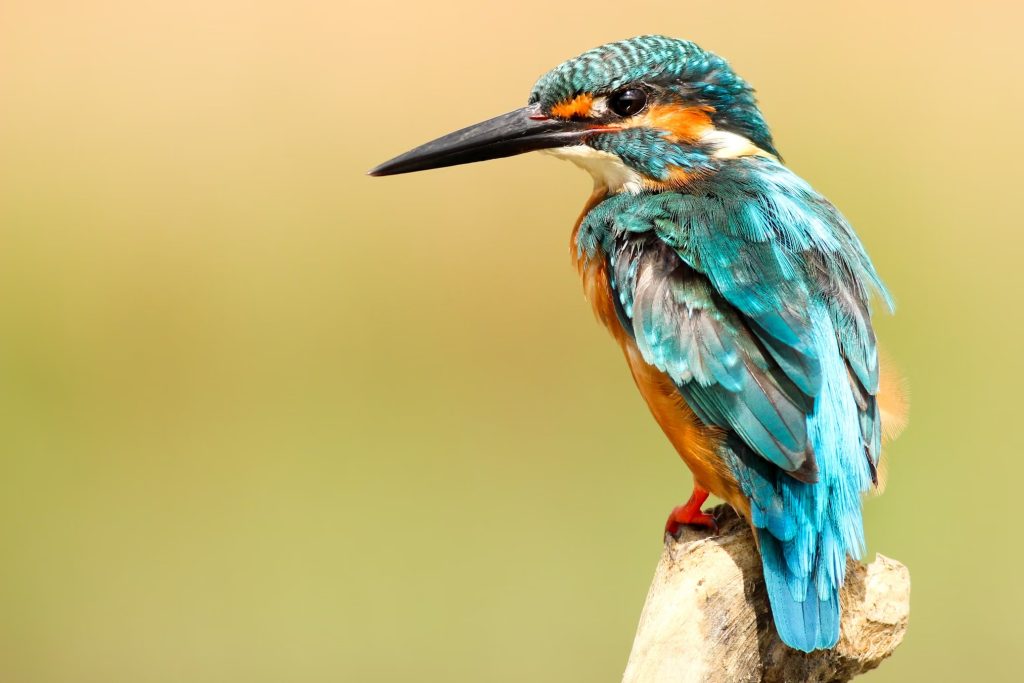Friday
Community ArticlesThe Art of Mindful Birding
By Sean McCann
Mindful birding is the intentional use of birding for cultivating mindfulness. Anyone who has been entranced by seeing a murmuration (a phenomenon in which a flock of birds, sometimes thousands of individuals strong, flies in perfect harmony as one shifting, undulating mass) has had a taste of the wonder and grace available in such moments. These kinds of experiences can connect us with the present moment, and the gentleness and appreciation available there.
Birding for Mindfulness
As I walked into my backyard this morning, I heard the sweet, tinkling chorus of at least 50 cedar waxwings in the canopy of a nearby dogwood. The thoughts that had preoccupied me moments before vanished as I listened. Birdsong, like a meditation bell, has a way of bringing one’s focus into the present.
Birdsong, like a meditation bell, has a way of bringing one’s focus into the present.
I have had many experiences like this in the presence of birds, and it has occurred to me that, taking things a step further, birding can be used as an intentional practice (rather than a passive experience) for cultivating mindfulness.
Defining Birding (and Bird Watching)
Birding is finding, identifying, and cataloging bird species; bird watching is more about passive enjoyment of the experience. The two can overlap.
Birding is different from bird watching. The former is the searching out, identifying, and cataloging of bird species; the latter is more about passive enjoyment of the experience–identification and cataloging of species is not a primary concern. The two can, and often do, overlap.
Defining Mindfulness
Throughout this article, I use the term “mindfulness” to refer to “right mindfulness,” the seventh step on the Noble Eightfold Path:
“Right mindfulness is to be diligently aware, mindful, and attentive with regard to (1) the activities of the body (kaya), (2) sensations or feelings (vedana), (3) the activities of the mind (citta) and (4) ideas, thoughts, conceptions, and things (dhamma).”
Birding as an Aspect of Artful Living
The Shambhala tradition of Tibetan Buddhism utilizes a wide range of practices and forms for cultivating mindfulness and panoramic awareness, the ultimate goal of which is the realization of basic goodness.
Basic Goodness
Basic goodness is how the Shambhala tradition talks about Buddha Nature. The following quote is from The Sacred Path of The Warrior by Chögyam Trungpa Rinpoche.
“Every human being has a basic nature of goodness, which is undiluted and unconfused. That goodness contains tremendous gentleness and appreciation…It is not just an arbitrary idea that the world is good, but it is good because we can experience its goodness…We have an actual connection to reality that can wake us up and make us feel basically, fundamentally good.“
Artful living describes how we can expand the realization and embodiment of basic goodness from the meditation cushion into other activities and environments. This requires that we curate our activities, engagements, forms of entertainment and education, and so on with this goal in mind.
“Art is not merely being able to do your music or your painting or your little arrangements or installations of this and that. The kind of art we are talking about is big art. It is having basic goodness in an environment, which in itself is a work of art.”
(For a more in depth exploration of these concepts, consider reading True Perception: The Path of Dharma Art by Chögyam Trungpa Rinpoche.)
Birding offers a powerful means of engaging life artfully.
While I am not aware of Chögyam Trungpa being particularly fond of birding, it seems to me that birding offers a powerful means of engaging life in this way.
Exploring the wonders of nature, pursuing rare birds, and protecting fragile ecosystems is an example of artful living: “Having basic goodness in an environment.”
How Does Birding Encourage Mindfulness?
Most simply, birding can be used to encourage right mindfulness by focusing the mind on specific phenomena in the present moment, thereby clearing the mind of discursive thoughts and strengthening one’s powers of focus and awareness.
Birding can focus the mind on specific phenomena in the present moment.
This is not a new strategy. Eastern traditions, in general, have long utilized arts as diverse as calligraphy, martial arts, farming, medicine, and so on as ways of living in harmony with the Dharma or Dao (depending on the nomenclature of the tradition).
Mindfulness also has an aspect of non-attachment, which is indispensable to the cultivation of wisdom. If we are attached to certain phenomena and their outcomes, then we are not being completely mindful. In this way, it is easy to see how birding could be antithetical to the cultivation of mindfulness. It is, therefore, important to clarify one’s motivations and keep in mind one’s most foundational principles when engaging in such an activity.
Being aware of and taking responsibility for one’s actions are the foundation of authenticity, so it is important that we are clear about these pieces if we are serious about internal cultivation.
Birding with the Senses
The senses are our means of engaging the physical world, which is why all observable phenomena are also sometimes referred to as sense objects. It follows that working with the senses is necessary for cultivating mindfulness. Birding is an ideal activity for working on this because it requires one to tune the senses in very specific ways.
To continue reading The Art of Mindful Birding please visit the Shambhala Online Blog.
***
About the Author
Sean McCann is a practitioner of Chinese medicine, taijiquan and qigong instructor, and writer. He lives near the border of Humboldt and Trinity Counties in the mountains of Northern California with his wife, Trang, and daughter, Ixora. His passions include the study and practice of internal martial arts, archery, gardening, and spending time in the great outdoors. His personal website is www.MindfulMountainMedicine.com, and he is on Instagram @Mindful_Mountain_Medicine.







